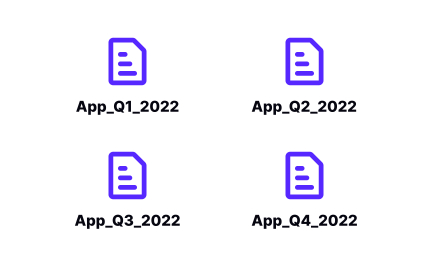Documentation Standards
Documentation standards define how teams create, format, and maintain internal and external docs. This is important for clarity, usability, and alignment.
What are Documentation Standards?
Documentation standards establish consistent approaches to creating, organizing, and maintaining written information that enables effective knowledge sharing, onboarding, and decision-making across teams and organizations. These standards cover content structure, writing style, formatting conventions, version control, and maintenance processes that ensure documentation remains accurate, accessible, and useful over time.
This framework encompasses technical writing principles, information architecture, content management, collaboration processes, and quality assurance that enable scalable documentation practices supporting organizational growth and knowledge preservation.
Documentation Standards in Product Context
Product managers rely on documentation standards to capture product decisions, requirements, and knowledge that enables team coordination and informed decision-making across projects and organizational changes.
Product requirements and specification documentation
Standardized formats for capturing product requirements ensure completeness while enabling stakeholders to understand scope, constraints, and success criteria consistently. Clear requirements prevent misunderstandings and scope creep.
Decision documentation and context preservation
Standards for documenting product decisions including rationale and trade-offs help teams understand why choices were made, enabling better future decisions and preventing repeated debates about settled questions.
Process documentation and workflow guidance
Consistent documentation of product processes enables team members to understand responsibilities, timelines, and handoff procedures, reducing confusion and improving coordination efficiency.
Knowledge management and institutional memory
Documentation standards ensure critical product knowledge is captured and maintained rather than existing only in individual memory, protecting organizations from knowledge loss through team changes.
Documentation Type Standards
Technical documentation:
- API documentation: Consistent format for endpoints, parameters, examples, and error handling
- Setup guides: Step-by-step instructions with prerequisite information and troubleshooting
- Architecture documentation: System design explanations with diagrams and component relationships
- Code documentation: Inline comments and external guides explaining implementation decisions
Process and procedural documentation:
- Workflow guides: Step-by-step process documentation with roles, responsibilities, and timelines
- Policy documentation: Clear explanation of organizational rules, guidelines, and compliance requirements
- Training materials: Structured learning content with exercises and assessment criteria
- Troubleshooting guides: Common problems and solutions with escalation procedures
Strategic and planning documentation:
- Strategy documents: Clear articulation of goals, approaches, and success metrics
- Meeting notes: Consistent format capturing decisions, action items, and follow-up responsibilities
- Project documentation: Scope, timelines, resources, and success criteria with regular status updates
- Research findings: User research, market analysis, and competitive intelligence with clear implications
Documentation Tools and Platforms
- GitBook: Technical documentation platform with version control and team collaboration
- Slab: Modern team wiki with real-time collaboration and advanced search capabilities
- GitLab/GitHub: Version-controlled documentation with markdown support and developer workflow integration
- Gitiles: Web-based repository browser with integrated documentation viewing
- MkDocs: Static site generator for project documentation with markdown source files
- Sphinx: Documentation generator popular in software development with multiple output formats
- Mintlfy: AI-native technical documentation platform
- Fern: Instant Docs and SDKs for your API. Start with an API spec. Generate interactive API documentation.
Recommended resources
Courses

AI Prompts Foundations

Building Content Design Systems

Business & Technical Fundamentals for PMs
Lessons

Organizing UX Research

Assumption Testing





